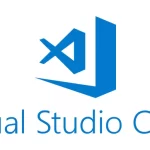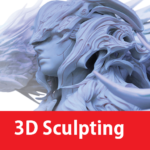How to Typeset Documents with Precision: Crash Course in LaTeX

Typesetting documents with precision is an essential skill for academics, researchers, and anyone seeking a professional and polished presentation of their work. LaTeX, a powerful typesetting system, offers unparalleled control over document layout, typography, and formatting.
In this crash course, we’ll guide you through the fundamentals of LaTeX, equipping you with the tools to create beautifully typeset documents that exude sophistication.
Getting Started: Unveiling LaTeX Basics
Before diving into the intricacies of LaTeX, familiarize yourself with its basic concepts, including document structure, commands, and environments.
1. Setting Up Your LaTeX Environment: Installation and Editors
Learn how to set up a LaTeX environment on your computer by installing a LaTeX distribution and selecting an editor. We’ll introduce popular editors like Overleaf and TeXstudio, making your LaTeX journey seamless.
2. Creating Your First Document: The Building Blocks
Discover the fundamental components of a LaTeX document, including the preamble, document class, and title. Begin with a simple example and explore the structure that forms the basis of all LaTeX documents.
3. Typography and Formatting: The Art of Presentation
Delve into LaTeX’s advanced typography capabilities. Control font styles, sizes, line spacing, and alignment to achieve impeccable formatting that sets your documents apart.
4. Mathematical Expressions: Equations with Elegance
LaTeX is renowned for its exceptional support for mathematical typesetting. Master the art of creating equations, symbols, matrices, and complex mathematical structures that seamlessly integrate with your text.
5. Figures and Tables: Enhancing Visuals
Learn to incorporate images, graphs, and tables into your documents. LaTeX’s precision control ensures your visuals are seamlessly integrated and maintain a consistent look throughout the document.
6. Citations and Bibliographies: Scholarly References Made Easy
Explore LaTeX’s citation management with BibTeX. Efficiently organize and cite references, ensuring your documents meet scholarly standards.
FAQs:
Is LaTeX suitable for non-technical users?
While LaTeX has a learning curve, its benefits are worth the effort. The crash course breaks down the essentials, allowing non-technical users to gradually grasp and apply the concepts for exceptional document typesetting.
Can I use LaTeX for different types of documents?
Absolutely! LaTeX is versatile and can be used for various document types, including research papers, reports, theses, presentations, and even resumes. Its precision makes it an ideal choice for professional presentations.
Conclusion
Mastering the art of typesetting with LaTeX opens a world of possibilities for creating sophisticated and professional documents. With the foundational knowledge gained from this crash course, you’re poised to embark on a journey of elegant typography, precise formatting, and scholarly presentation. As you continue to explore LaTeX, remember that practice and experimentation will refine your skills. So, embrace LaTeX’s precision, elevate your document presentation, and leave a lasting impression with every page you typeset.

Leroy Allen is a blogger with a passion for technology who has been writing about the latest in the world of gadgets and gizmos. They are an avid reader of Science-Fiction novels and love to spend time with their wife and kids.















